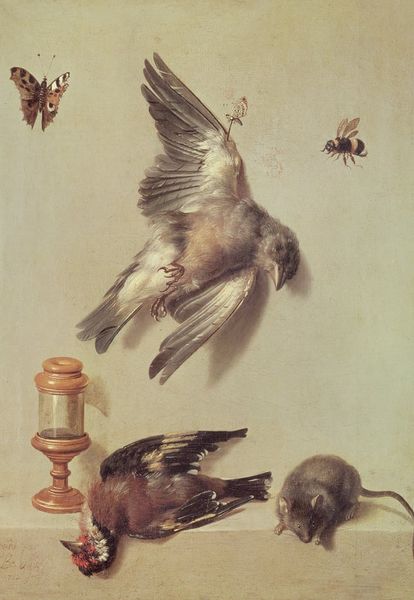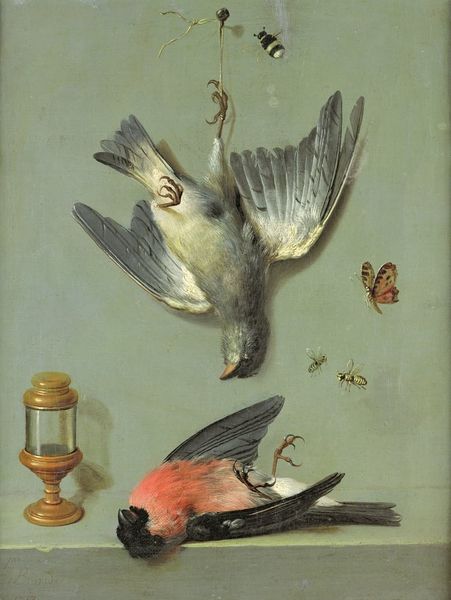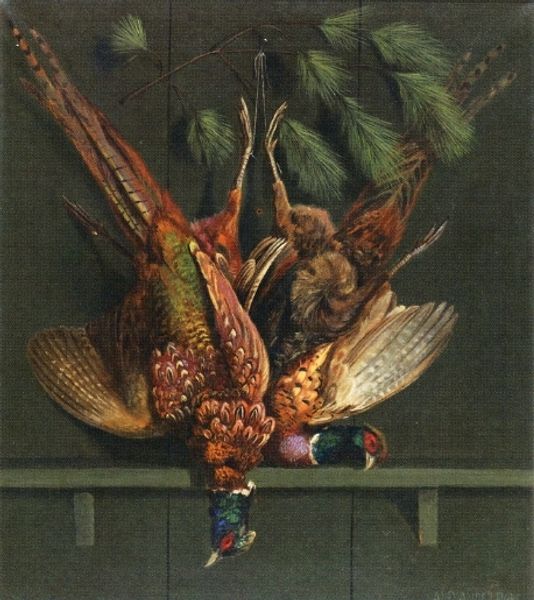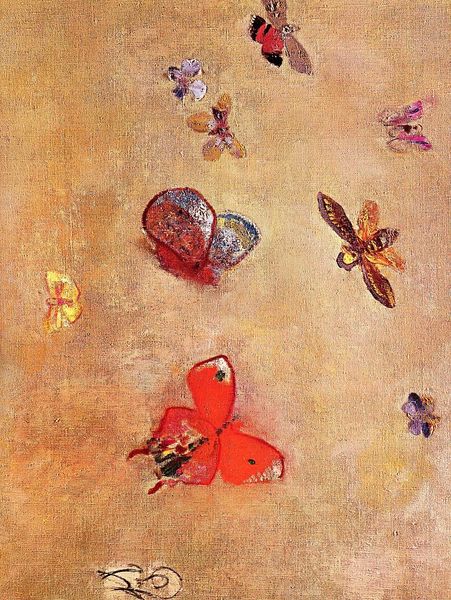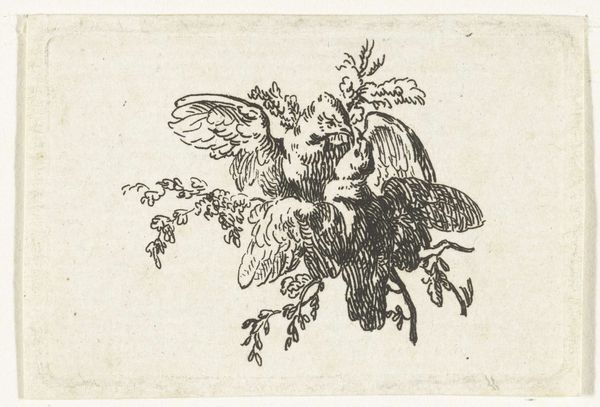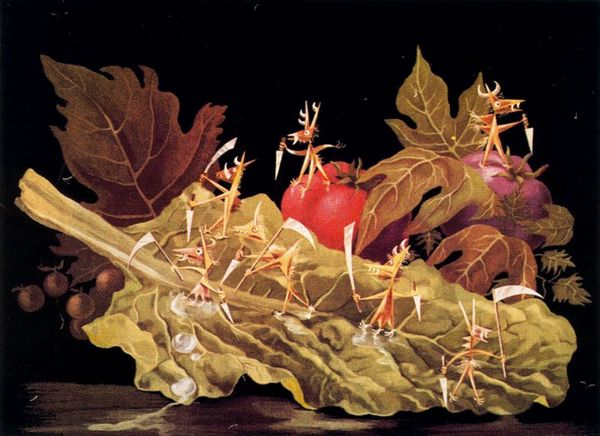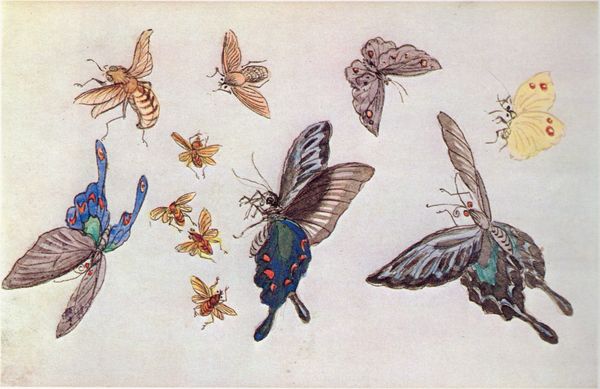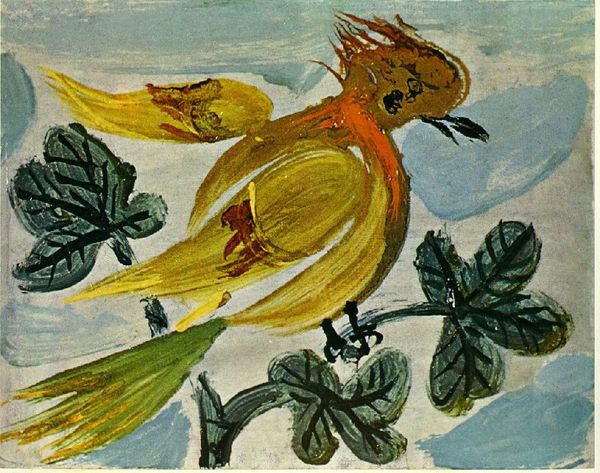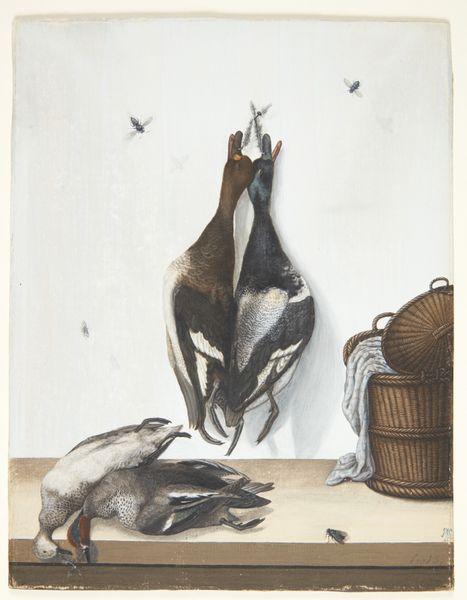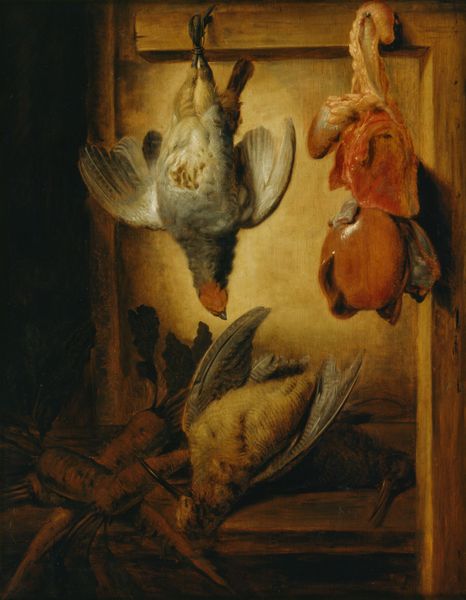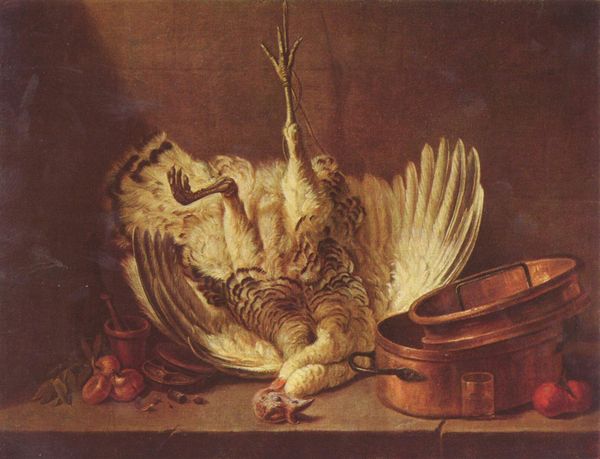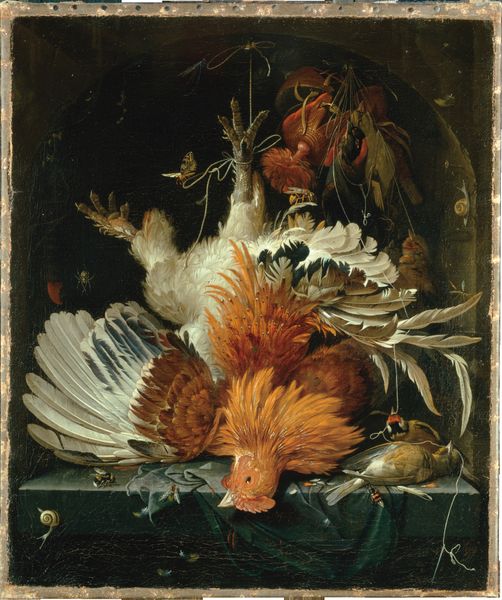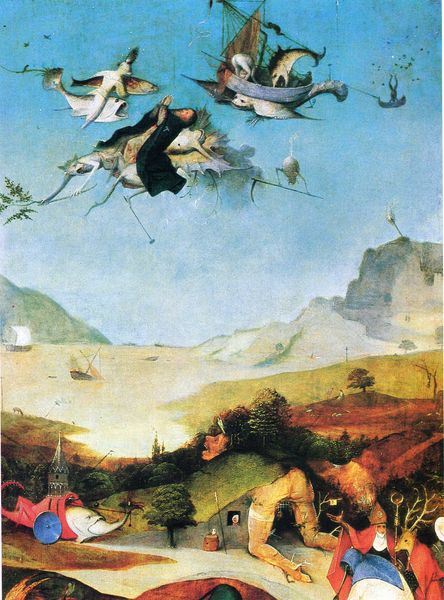
painting, oil-paint
#
narrative-art
#
baroque
#
painting
#
oil-paint
#
oil painting
#
vanitas
#
watercolor
#
realism
Copyright: Public domain
Curator: Here we have Jean-Baptiste Oudry’s “Still Life with Dead Birds and Cherries,” created in 1712. It's rendered in oil on canvas. Editor: Well, my first reaction is a somewhat unsettling tranquility. The arrangement, despite the subject matter, is oddly harmonious. The soft lighting almost romanticizes the scene. Curator: That harmony speaks to Oudry’s mastery of Baroque still life. Notice the carefully chosen objects: the lifeless birds, juxtaposed with the vibrant cherries and fleeting insects. These are all deliberate symbols within a tradition known as Vanitas. Editor: Vanitas, yes, so it's intended as a memento mori, a reminder of the ephemerality of life. The contrast is certainly potent. We have the richness of the cherries, the beauty of the butterfly, up against the stark reality of mortality represented by the birds. Is that a symbolic pairing of the sensuous with death? Curator: Precisely. Consider the cultural context of Oudry's time. These still lifes were often commissioned by the wealthy as a subtle reminder of their own mortality amid their opulence. It was both decorative and a philosophical meditation. The painting has strong ties with similar Netherlandish painting that was so popular at the time. Editor: The inclusion of the insects seems particularly telling. Flies and butterflies – symbols of transformation, perhaps, but also of decay. They buzz around, indifferent to the tragedy of the birds. In the baroque period insects began to appear as reminders of original sin. Curator: The artist’s brushwork adds to that complexity. Look closely; you can see a striking realism that brings these dead birds and perishable fruit to life—or rather, to a hyperreal version of death. The overall feeling is somber but strangely captivating, echoing that visual style made fashionable during the reign of Louis XIV. Editor: And, considering Oudry's later shift towards animal painting, especially his famous depictions of dogs in royal hunts, could we see this early work as a prelude, an exploration of the textures and forms of the animal world that he would later celebrate in a different context? Curator: Absolutely. This painting, though steeped in symbolism, reveals the foundations of his observant eye and skillful rendering. Editor: In the end, "Nature morte avec oiseux morts et cerises" succeeds as more than just a pretty arrangement. It is a reminder that nothing lasts. Curator: An image designed for contemplation that continues to intrigue today.
Comments
No comments
Be the first to comment and join the conversation on the ultimate creative platform.
